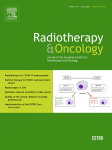Here is the original tweet:
View attachment 305168
And the nail in the coffin:
View attachment 305169
Incredibly irresponsible to say the least. I mean... broadcasting a single arm 5 patient study that “promises to improve patient outcome” and “will be a game changer” then comparing it to “light therapy” and tagging Trump?
Apart from the reckless delivery on twitter, I have issues with doing a 5 patient whole lung RT study during this pandemic.
What could possible be learned? All patients die? Related to treatment? I dunno. All live? Might be intervention, or not... it’s apparently a phase I/II so there’s some kind of efficacy endpoint?
All the while putting staff at risk and cancer patients too if there’s contamination of the vault. Not worth the risk given nothing can be learned in my opinion.
Perhaps there is a role for RT based on the historical data, but come on need a better study than this that justifies the risk.
Sent from my iPhone using SDN

 :
:

